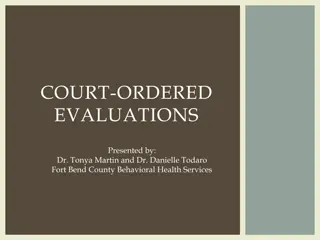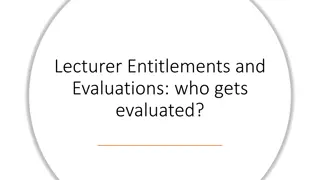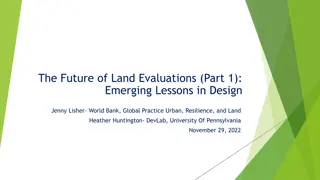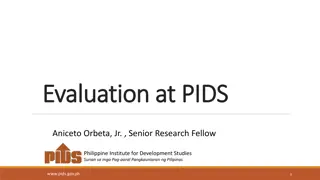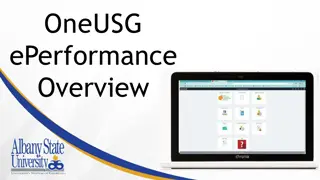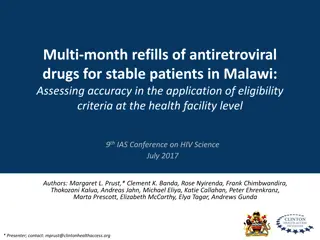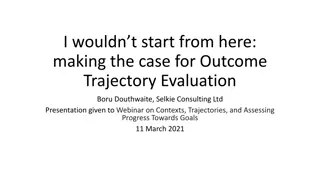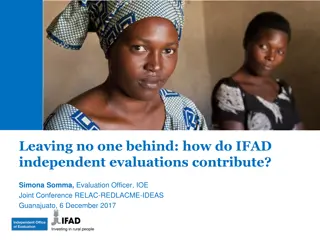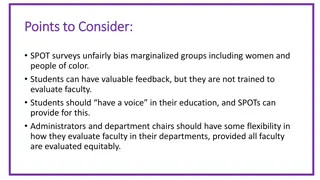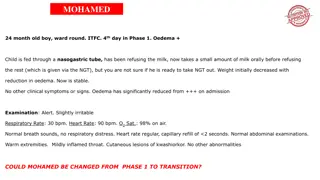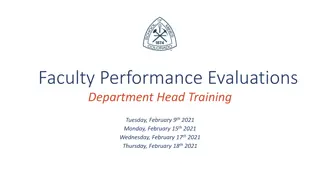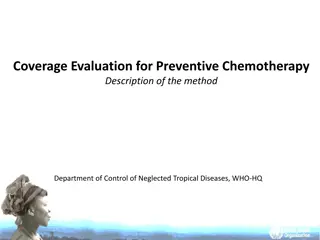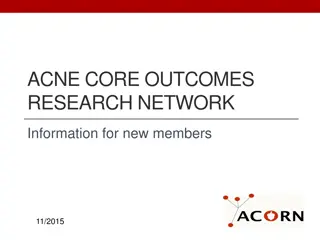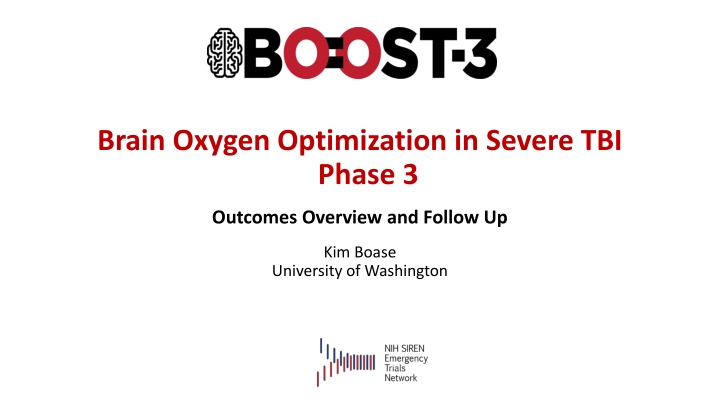
Successful 6-Month Outcome Evaluations Overview
This overview delves into the critical aspects of successful 6-month outcome evaluations, including pre-injury information collection, educational status considerations, and factors influencing the assessment process. It emphasizes the pivotal role of study coordinators in ensuring comprehensive data capture and effective follow-up strategies, highlighting the importance of communication and relationship-building for optimal outcomes and data quality assurance.
Download Presentation

Please find below an Image/Link to download the presentation.
The content on the website is provided AS IS for your information and personal use only. It may not be sold, licensed, or shared on other websites without obtaining consent from the author. If you encounter any issues during the download, it is possible that the publisher has removed the file from their server.
You are allowed to download the files provided on this website for personal or commercial use, subject to the condition that they are used lawfully. All files are the property of their respective owners.
The content on the website is provided AS IS for your information and personal use only. It may not be sold, licensed, or shared on other websites without obtaining consent from the author.
E N D
Presentation Transcript
Brain Oxygen Optimization in Severe TBI Phase 3 Outcomes Overview and Follow Up Kim Boase University of Washington
Successful Trial Requirements Purpose: To outline the role the study coordinator and PI play in the success of the 6 month follow-up. We have 2 goals: Obtain complete and valid data at the 6 month evaluation Study coordinator documents pre-injury information Well-trained outcome examiners Data quality checks Excellent follow-up rates Study coordinators are among the first to establish relationships with families and patients
Communication is Key Communication between the study coordinator and the local blinded outcome examiner is essential. Determine roles of each team member. Obtain pre-injury information Monthly calls Scheduling the 6 month outcome evaluation Making reminder calls for the 6 month appointment Arranging transportation, reminder letters Who follows up with a no show
Building Relationships The study coordinator will be one of the first team members to begin building a relationship with the patient and their family. Once the treatment phase has ended, the local outcome examiner can begin to get involved. If possible, the study coordinator should introduce the outcome examiner to the patient and their family. The study coordinator can explain to the patient and their family the role each will play in the following 6 months.
Successful 6 Month Outcome Evaluations Complete pre-injury information Educational level for Trail Making Test Prior work and school status for the GOSE-R Obtain good contact information Identify any language barriers Provide other information that can impact testing (aphasia, motor impairments etc.)
Pre-Injury Information How far did you go through school? How many years of school have you completed? _____ (0 years 20 years) Years of Education What is the highest level achieved in school? (years in ( ) should correspond to 1a above ) ____ 0-8 (0-8 years) ____ 9-11 (9-11 years) ____ GED (0-11) ____ High School Diploma (12) ____ Vocational/Technical Training (12) ____ 1 to 3 years of College, AA degree, no degree (13-15 years) ____ BA, BS (16 or 17 years) ____ MA, MS (18 or 19 years) ____ JD (19 years) ____ MD, PhD, DDS (20 years) Level of Education
Pre-Injury Information Is English the first language of the participant? ____ Yes ____ No Specify native language __________________________ ____ Unknown Will an interpreter be required for the monthly calls or the 6 month follow-up? ____ No ____ Yes ____ Unknown
Contact Information Try to obtain at least 3 different points of contact: Names Relationship to participant Addresses Email Phone numbers Social media such as Messenger Note discharge information Name of the facility Phone number
Monthly Calls Purpose Maintain contact with the participant and family Alert participant and family to 6 month follow-up Update contact information and any missing pre-injury data Get basic information about how the participant is recovering SAE If possible, this is a good opportunity for the local outcome examiner to begin establishing a relationship with the family. Establish a call log. In the case of a participant being lost to follow-up, the call log will be reviewed by the SIREN Operations Committee.
Scheduling the Outcome Evaluation Coordinate between the local outcome examiner and the central examiner. A Google calendar system will be established for scheduling the central examiners. Try to be flexible and accommodate the needs of the participants, their families and caregivers. Send a confirmation letter with pertinent information. Reminder calls, texts, emails one week before the appointment, as well as the day before. Encourage a confirmation from the participant. Arrange transportation if necessary. Arrange for an interpreter if necessary. Confirm that adequate space is available for the testing to take place.
6 Month Outcome Evaluation The appointment will look similar to the following: The local examiner will greet the participant and begin the assessment with a basic orientation task (GOAT) The central examiner will then be introduced and brought into the exam via the phone. The GOSE-R will be completed by the central examiner. The local examiner will complete the remainder of the assessment. The 2 examiners will touch base when the evaluation is complete.
Helpful Information for Outcome Examiners Language preference Interpreter requirements Basic information (if known) about how the participant is doing, such as: aphasias, motor limitations, mobility issues, significant peripheral injuries, vision or hearing impairments. Will someone bring the participant to the appointment? Current living situation
Characteristics of a Good Outcome Examiner Often someone with a psychology background (BA level is typical) Excellent interpersonal skills Someone who is able to work with varied populations. Someone who is able to strike a balance between getting the testing completed while maintaining sensitivity and empathy. Exhibits patience, can create a relaxed, friendly environment Detail oriented Good communication skills
Odds and Ends Space: Outcome testing should take place in a quiet room. Should ensure privacy. Have a table or comfortable working surface. Test materials need to be kept together and accessible. Payment: Participants can be reimbursed for any incurred expenses including travel and parking. The study can cover costs of app arranged transport such as Uber or Lyft; taxis and bus fare. Referral to MD for follow-up: Be prepared to assist participants who would like to be seen by a medical professional (eg: Physiatrist, Neurologist, Rehab Therapies) Procedure for High Suicide Risk: A procedure has been put in place for the trial. Each site will need to have a plan for participants needing intervention.
PI and Study Coordinator Responsibilities PI Responsibilities Study Coordinator Responsibilities. General oversight including communication between all study team members. Communication with outcome examiners Obtaining pre-injury information and contact information Hiring an outcome examiner Acquiring space for the assessments and test materials. In some cases, conducting the monthly calls. Plan for high suicide risk In some cases, scheduling the 6 month evaluation. Plan for medical follow up Questions?



